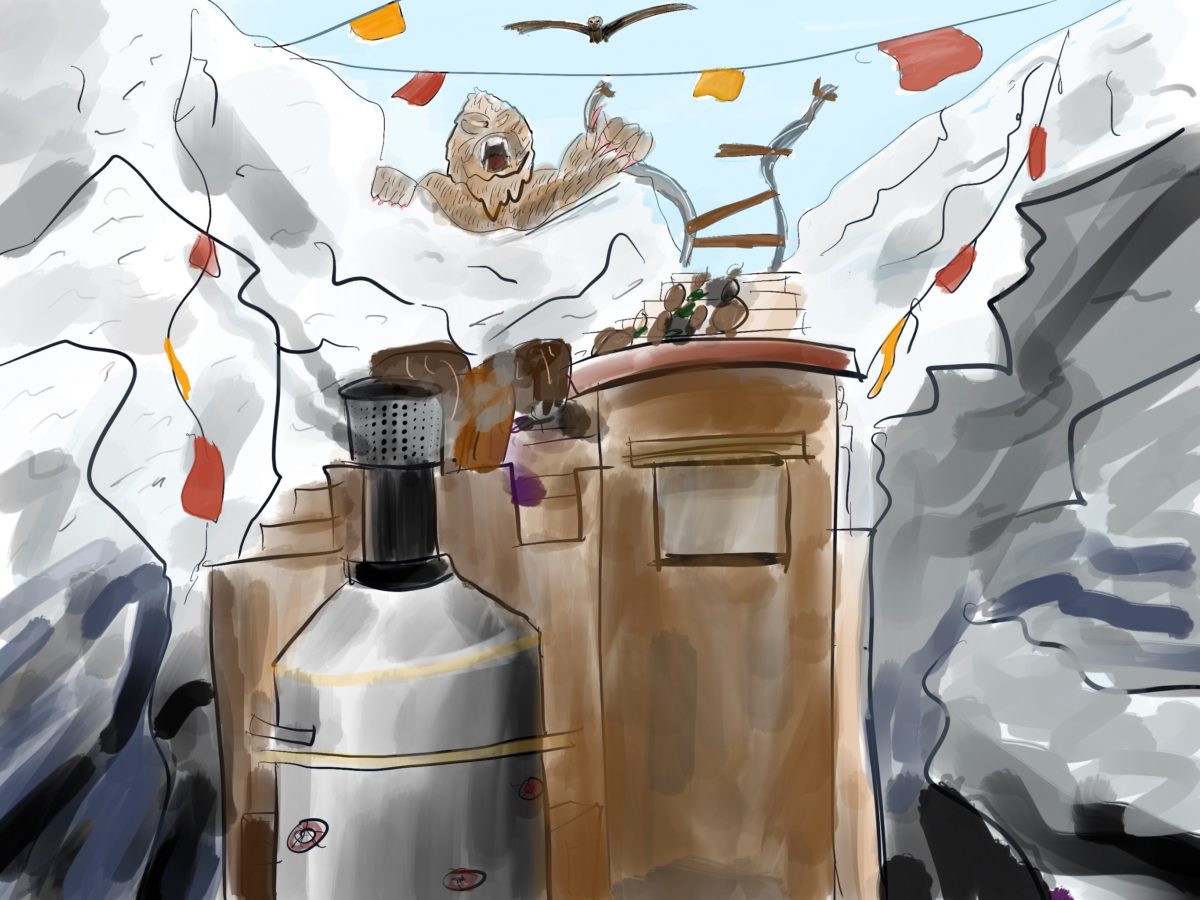When you think about it, there has to be something really sophisticated about the storytelling structure of The Carousel of Progress. Not many stories have a recurring cast of characters that essentially relive the same scene over and over again while experiencing no character growth, no real conflict, no real plot, and yet somehow lead to a satisfying conclusion. In fact the point of the “plot” of each scene – if you can even call it a plot – is that everything is perfect, there are no unsolvable problems, and life is pretty great. But, I think, that understanding how this attraction tells it story is actually key to understanding how many attractions, many of the best attractions – especially of the 60s, 70s, and 80s tell their stories.
The carousel of progress is a great example of story that tells itself almost entirely with subtext and an awareness of the context that its audience lives in a different time period than the one depicted. The story depends on a permanent, though subtle, break in the fourth wall. Even though we don’t play much of a roll in the events depicted, we are none the less characters in the story that the other characters (well character – father) acknowledge. We actually play a fairly major roll – because even though it’s not made explicit with an elaborate justification or plot, and instead through a very presentational formalism, we are essentially playing time travelers visiting the same kind of family in 4 different eras and this is when you can start to break down how the story actually functions.
And it functions because the main characters of the story aren’t actually the humans we see, but actually ourselves and, more importantly – the setting. I’d argue that the setting is actually the protagonist of the show. Which is a kind of weird thing to consider but it is the thing which experiences change and growth over the course of the plot.
Traditional stories happen by seeing a main character, the protagonist, go through some sort of change or growth over time. And some fancy stories, say beauty and the beast (someone else pointed this out to me but I don’t remember who) separate the main character and protagonist. Belle is the main character, but she is arguably not the protagonist. She’s pretty much perfect in the beginning and perfect in the end. The story is of Beast – he’s the one that grows and develops over the course of the story. He’s the one with the flaw who eventually overcomes that flaw.
And then we get to theme parks, and the carousel of progress – where a new structure emerges. But it’s actually pretty similar to the beauty and the beast scenario above.
Enter us. We are the main characters, it’s our POV that shapes the story we see. But alas we’re not the protagonists. For the purposes of the story – we’re perfect. We don’t really need to change. We’re here to observe the change, perhaps facilitate the change. The SETTING is the protagonist. It is flawed, it needs to change.
And by setting I’m not referring to just the set. The setting is the entire world of the scene of the story. And a 2019 coffee shop is not just demarked as a 2019 coffee shop by the presence of a chalkboard menu and cold brew espresso machine. But also by the numerous laptop toting hipsters waxing Abraham Lincoln beards, the woman in the corner unjamming her manual typewriter, and the guy who just arrived on a unicycle. These characters are part of the setting, and their micro stories make it come alive.
And so we get to the carousel of progress. The first scene we see is a white bread American family circa 1900. Remember the setting itself is the character. And over the course of five minutes it says to us (also characters) “hey isn’t this great! Everything is perfect.” And we say back (in our heads) – “yeah not really, haha you’re so quaint”. From our point of view, the setting is flawed. The technology is old and antiquainted and the people are happy with it. They haven’t seen the light! And so we move on and the setting moves on, and changes, tries to impress us, and the cycle repeats until we reach a point where the setting (at least when the attraction debuted) can say “wow look how great I am” and we can respond back “yeah actually you’re right! You’ve met and surpassed my expectations” Hell in this way, the audience is in fact the source of the conflict and I daresay a kind of antagonist – in the sense that an antagonist is the motivation for change.
And this conflict, this relationship, between the setting (as a character) and us helps us too. Just as Belle might have learned some new things about life along the way of her journey so have we. When we initially saw the setting – we laughed and said “oh how quaint”. But as the setting grows and develops over time and we see patterns repeat – we start to notice those patterns in ourselves and our own lives. The theme of the continual march of progress, and how we don’t even know what wonders await us, manifests itself in us as the pattern in the character becomes obvious.
This is how The Carousel of Progress works, and, I think, many other traditional attractions. How the original designers of that age were able to do something so sophisticated, tell a type of story that is so rare – but so full of potential, and do it basically intuitively – damn I don’t think I’ll ever know that. But, in terms of what’s actually happening, by god I think I actually GET it now.
And shout-out to @pureimagineering because his theory of triple perspective storytelling very much helps inform this.

